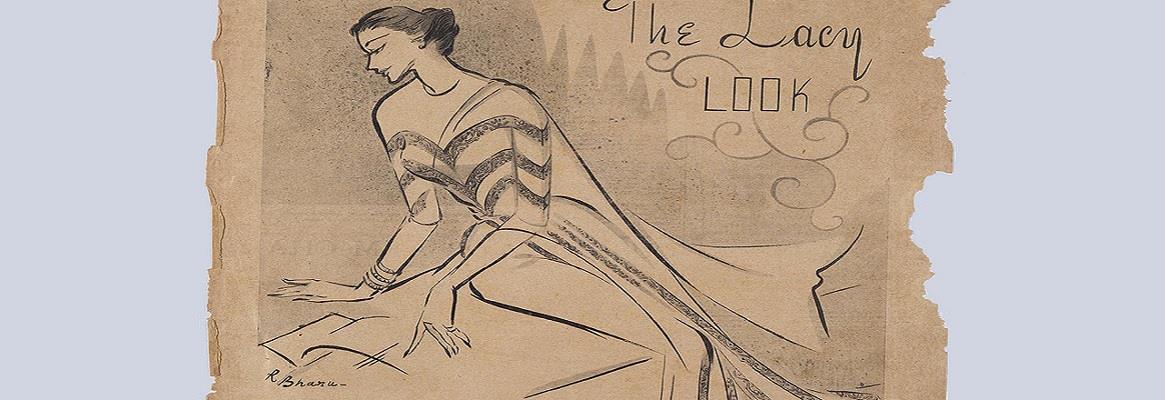A director’s designer who followed each diktat with precision, Bhanu worked with top filmmakers both in India and outside. She took control of each and every character in a film, and then created the costumes. Competition never worried her even when the film industry was flooded with designers, as she knew that her costumes and creations were based on rock-solid research of textiles and construction. Her The Art of Costume Design (2010) is a bible for students of fashion and films.
It would be next to impossible for anyone to walk the walk of Oscar awardee Bhanu Athaiya, who passed away on October 15, 2020. When a film repertoire stands at 231 movies from 1953 to 2014, and that too in so many languages, it is a feat hard to emulate. Beyond the celluloid, her costume designing ranged from calendars and theatre to even fashion shows.
A gold medallist, Bhanu became a living legend in the world of costume design. Her childhood was spent in Kolhapur where she was exposed to the finer aspects of art, music, vocals and embroidery. By the time she was a mere nine, Bhanu had passed the elementary and intermediate art examinations and soon after her matriculation, she was ready to enter the artistic portals of the JJ School of Art.
Bhanu’s first stint as a part-time illustrator started with the lesser-known women’s magazine Fashion and Beauty, edited by KD Jhangiani who later went on to edit Femina. In the late Forties, Bhanu was the favoured fashion illustrator at Eve’s Weekly. Her fashion sketches were aimed at giving the modern, post-Independence women of India a new direction in fashion.
Bhanu’s sketches from 1948 to 1953 offered a range of dramatic saris and cholis besides varying embroidery designs where she highlighted the crafts of the country. When Eve’s Weekly opened a boutique, it was her creations that were sold to celebrity clients as well as the Indian movie stars.

Becoming a rage: A choli that Bhanu created for Nadira for the 1955 blockbuster Shree 420 proved to be a rage with fashion followers and became a sensation—the first of steps that she took into the world of cinema. Bhanu’s very successful costume designing career for movies started a year later with the cult classic C.I.D. Thereafter, her designing story was a shining meteor. For Sahib Bibi Aur Ghulam, Guru Dutt sent her to Calcutta to study the era because for Bhanu intense research was the soul of her designs.
She revolutionised the salwar kameez in Waqt (1965) by narrowing the salwar into churidars and then added a sexy figure-hugging tight kurta. For Amrapali, she created the form-fitted outfits that raged on.
The feather in the Gandhi cap: When Richard Attenborough was searching for designers in India for Gandhi (1982), he interviewed several who were eager to work with the legendary director. But it was only after a fifteen-minute tryst with Bhanu that he was convinced he had found his perfect designer.
In 1980, when Gandhi was offered to her, Bhanu was given twelve weekends to finish her other assignments in Mumbai and then spend two-and-half months in Delhi for the shoot. Bhanu covered an era—spanning from 1885 to 1948—for Gandhi. And of course, the Oscar would be hers in 1983, as she not only created costumes for the principal characters but also the rest of the cast that numbered hundreds, especially during the funeral scene where the massive crowd had to be dressed correctly.
Awards galore: In 1991, Bhanu got the National Award for Gulzar’s Lekin, which had a Rajasthani backdrop. Again in 2001, Bhanu walked off with the National Award for Lagaan, which was also the entry for the Oscars that year and Bhanu’s second film to compete at the Academy Awards. In 1992, The Observer Screen Award was Bhanu’s for Randhir Kapoor’s Henna.

But then, Bhanu was not only an expert at creating period and traditional costumes; stylish westernwear was also her forte, when she created perky school girl outfits for Anu Agarwal in Aashiqui and Simi Garewal’s glamorous gowns during the TV programme Women’s World as well as Karz. In spite of her impressive repertoire, it was a pity that she was never considered for any Padma Awards.
Innately private: Bhanu the person was always very private and almost a recluse, since for her only designing was her life and she was involved in it 24x7. She never had assistants, as she felt no assistant could think like her. Getting an appointment for an interview with her was difficult, as she rarely appeared in print. A hard taskmaster, Bhanu had a firm grip on everything when creating for a film, which was right from designing a pin to costumes and jewellery.
Her 24-hour schedule was carefully planned. Her favourite taxi driver awaited her in the early hours of the morning when she travelled to studios, workshops and film star homes for fittings. She often stated that the taxi was her home where she worked, ate and slept.
Bhanu’s homework for each film was so strong and thorough that she often stated that she was always ready when the examination came. She believed that she would be at her best and ready to go full steam ahead when she was given a challenging assignment.
A director’s designer who followed each diktat with precision, Bhanu worked with top filmmakers both in India and outside. She took control of each and every character in a film, and then created the costumes. Competition never worried her even when the film industry was flooded with designers, as she knew that her costumes and creations were based on rock-solid research of textiles and construction. Her The Art of Costume Design (2010) is a bible for students of fashion and films.
In 2012, Bhanu returned her Oscar trophy to the Academy in the US, as she felt it would be safer there. It was Bhanu’s desire that her work be exhibited in a museum for future generations to view. An auction of Bhanu’s sketches, paintings and works will take place in December 2020.
The online auction: Indrajit Chatterjee of Prinseps is organising the Bhanu Athaiya Online Auction for which competitive live bidding will last for a few hours on December 2 at 7 pm. Prinseps, started in 2018, specialises in niche estate sales and its inaugural auction was for the Rathindranath Tagore estate.
The Bhanu Athaiya Online Auction will feature early works of the designer while in school, along with her sketches for Eve’s Weekly and those from her time at the JJ School of Art. The estimates for art works vary from ₹10,000 to the highest estimate of ₹1 crore for the oil canvas ‘Prayer’, which was exhibited in the 1953 show of the Progressive Artists Group. The bidding will start at one-tenth of the estimated price and each lot will be bid on separately. Bidding will be online, but collectors can place bids via phone and email as well.
This article was first published in the November 2020 edition of the print magazine.








Comments